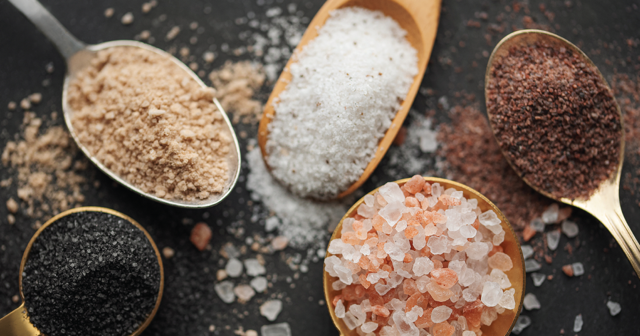
Sea Salt vs. Table Salt: What’s the Difference?
Not all salt is the same
June 17, 2024 | Source: REAL SIMPLE | by Phoebe Fry
Salt plays an essential role in kitchens worldwide—preserving food, enhancing flavors, modifying textures, and so on. All salt shares the same basic chemical composition, sodium chloride (NaCl), which may lead you to think that all salt is the same. However, the opposite is true. Many factors, including origin and processing, cause different varieties of salt to taste and behave differently. A perfect example is the difference between sea salt and table salt—two common types of salt with significant differences between them. Here, we’re breaking down those differences to help you understand when and how to use sea salt vs. table salt.
What Is Sea Salt?
Sea salt is produced by evaporating saltwater. From there, the salt crystals are minimally processed, which means that they retain trace levels of minerals like calcium, iron, and magnesium. Generally speaking, sea salt is more expensive than table salt for reasons including its labor-intensive production process and perceived higher quality. There are endless varieties of sea salt, which can vary considerably depending on how and where they are harvested and processed.
For example, Maldon Salt comes from the coastal town of Maldon, Essex, in the United Kingdom, and gets processed by evaporating brine over flames to form large, flaky crystals. These factors and more contribute to Maldon Salt’s unique flavor profile and texture. To give another example, Fleur de Sel is a type of sea salt from France that’s harvested from the surface of salt marshes. The resulting crystals have a briny, oceanic flavor and delicate texture, distinct from other sea salts such as Maldon Salt. Thus, there is no singular definition of sea salt, as you can find sea salts with all different textures and flavor profiles to suit your palate and needs.
Sea salt has a long, indefinite shelf life; just make sure to keep it in a dry place, separate from contaminants.
